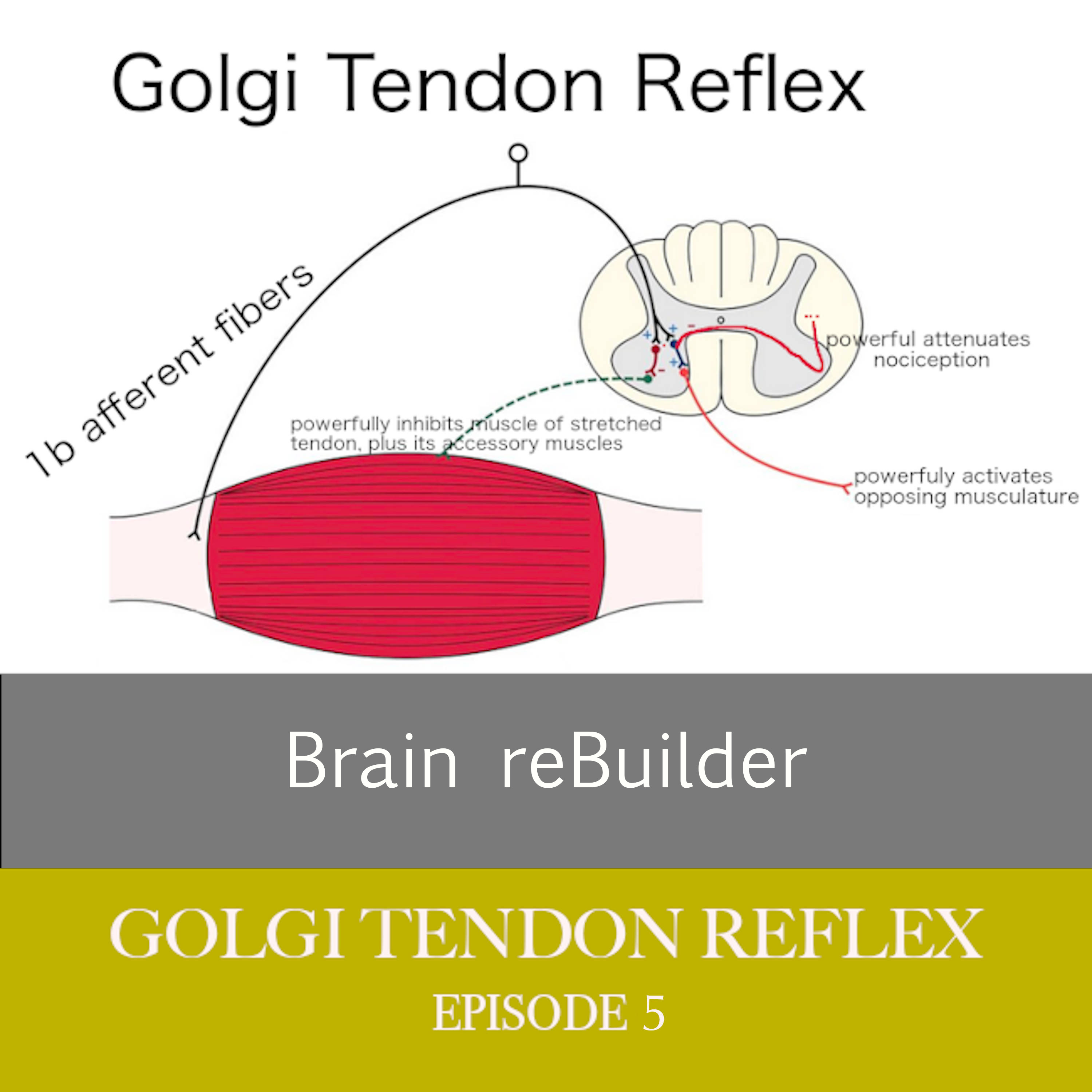Golgi Tendon Reflex Therapy

When repeated often enough, this method will generate substantial changes: \nin correction of abnormal posturing, \nwith the usefulness of the affected arm \u2013 in terms of voluntary motion, being able to grab, scratch, use fingers, etc\u2026, and \nas associated with positive changes in the brain, which may be observed through diagnostic imaging\nFast stretch of a tendon \nRepeated over time with the correct frequency and intensity, this activity will begin to rebuild and remap that part of the brain. Over a period of 1 to 3 months, it is very likely that stimulation of this reflex at least 3 times per day for at least 6 days per week, will generate substantial changes in both the usefulness of the arm (being able to grab, scratch, use fingers, etc\u2026) as well as associated positive changes in the brain as observed through diagnostic imaging. Please refer to Plasticity for additional insight into this process.\nHEMIPARESIS\nThe tightness commonly experienced by a stroke survivor is referred to as hemiparesis. For ease of understanding, that word can be broken into its two sub-components \u2018hemi\u2019 and \u2018paresis\u2019. \u2018Hemi\u2019, meaning half. This refers to the fact that only the right or left half of the body is affected in this way. \u2018Paresis\u2019, meaning restricted movement or weakness.\nEven though the word\u2019s sub-components don\u2019t suggest this, the side of the body that is restricted reverses when comparing the upper body to the lower body. In other words: if the right arm is curled, and if the lower body is also affected, then we can expect it to be the left leg that is restricted. Conversely, if the left arm was curled, it would be the right leg also affected*.\nGOLGI TENDON REFLEX\nThis reflex is also known as the inverse myotatic reflex or as autogenic inhibition. Previously it was thought that this reflex was only initiated with sustained contraction placing tension on a tendon. However, it is now understood that the reflex is actually triggered in response to tension on the actual tendon. \nWhen activated, the golgi tendon reflex powerfully relaxes the tight muscle while also driving neurological activity that will cause movement of the joint (opposite to the tightness) and powerfully alleviate pain. \n\n\n\n\n \n \n\n\nFast stretch on a tendon will increase its load before the muscle has adjusted in order to attenuate that load, and will thereby activate the golgi tendon reflex. This is important because it provides a direct method to activate a spinal cord reflex that will remove the tightness associated with spastic hemiparesis!\n\n\nBRAIN RESPONSE\nBecause the tightness caused by a stroke is normally most prevalent in one arm, and because the restriction follows the distribution of the pyramidal distribution of the corticospinal tract, additional benefits in the brain will result from activation of the golgi tendon reflex in one arm. \n\n\nTo begin, it must be understood that the tightness was caused by nerve cell damage in the area of the brain that impacts the descending system, particularly the pyramidal tract. The 1b afferent fibers associated with this reflex are very fast, and will certainly impact the specific affected brain region on the correct brain hemisphere. \n\n\nOUTCOME\nRepeated over time with the correct frequency and intensity, this activity will begin to rebuild and remap that part of the brain. Over a period of 1 to 3 months, it is very likely that stimulation of this reflex at least 3 times per day for at least 6 days per week, will generate substantial changes in both the usefulness of the arm (being able to grab, scratch, use fingers, etc\u2026) as well as associated positive changes in the brain as observed through diagnostic imaging. Note also that postural stabilization through the golgi-tendon reflex has been shown to improve plasticity in the brain overall (Windhorst, 2007). Please refer to Plasticity for additional insight into this process.\n\n\n\n\n\n\n\n\n\n\n\n\n\n\n*While \u201cstroke-like\u201d posturing is sometimes